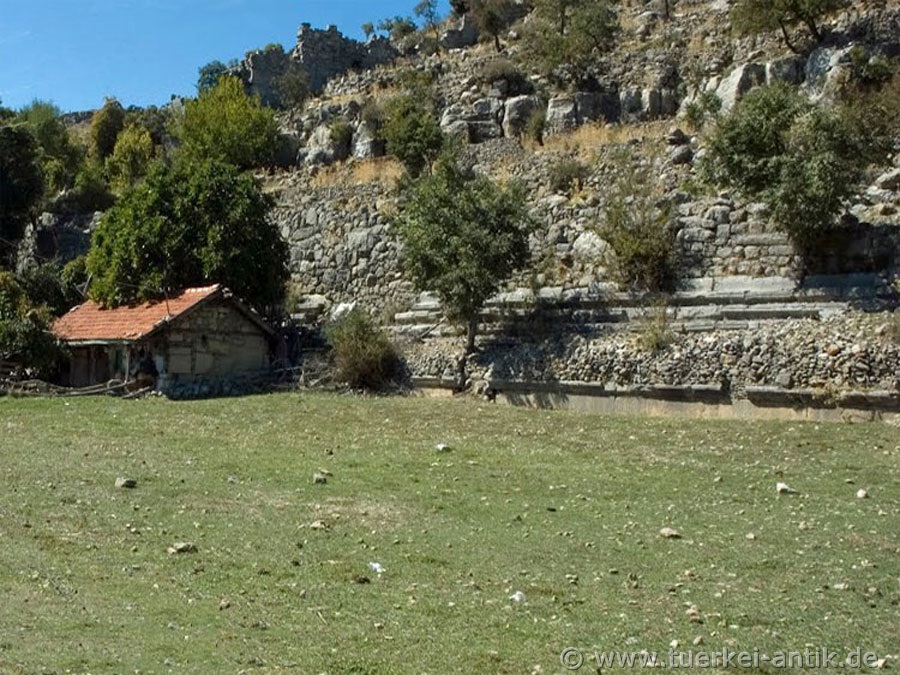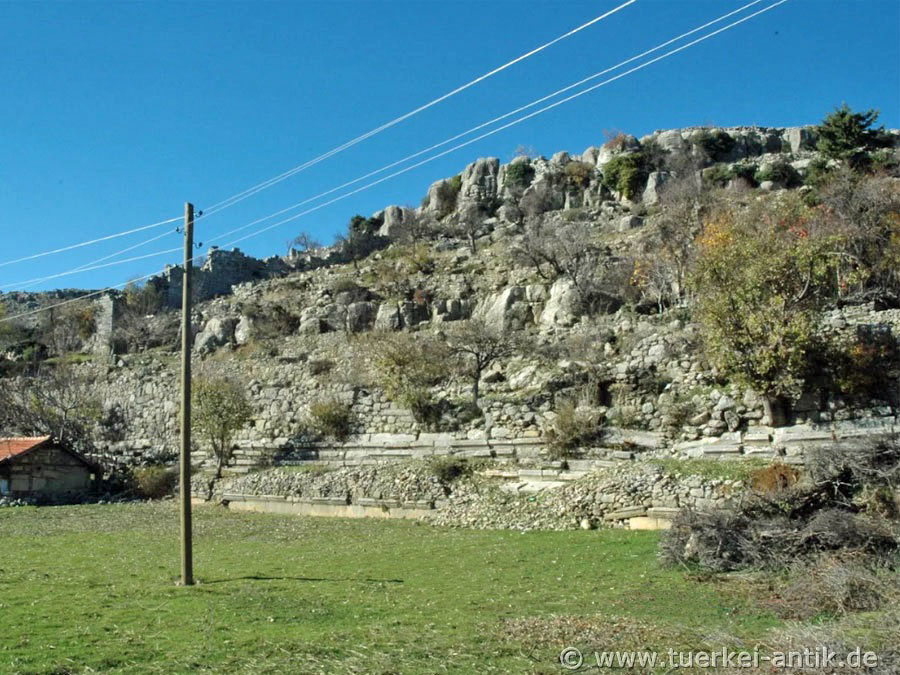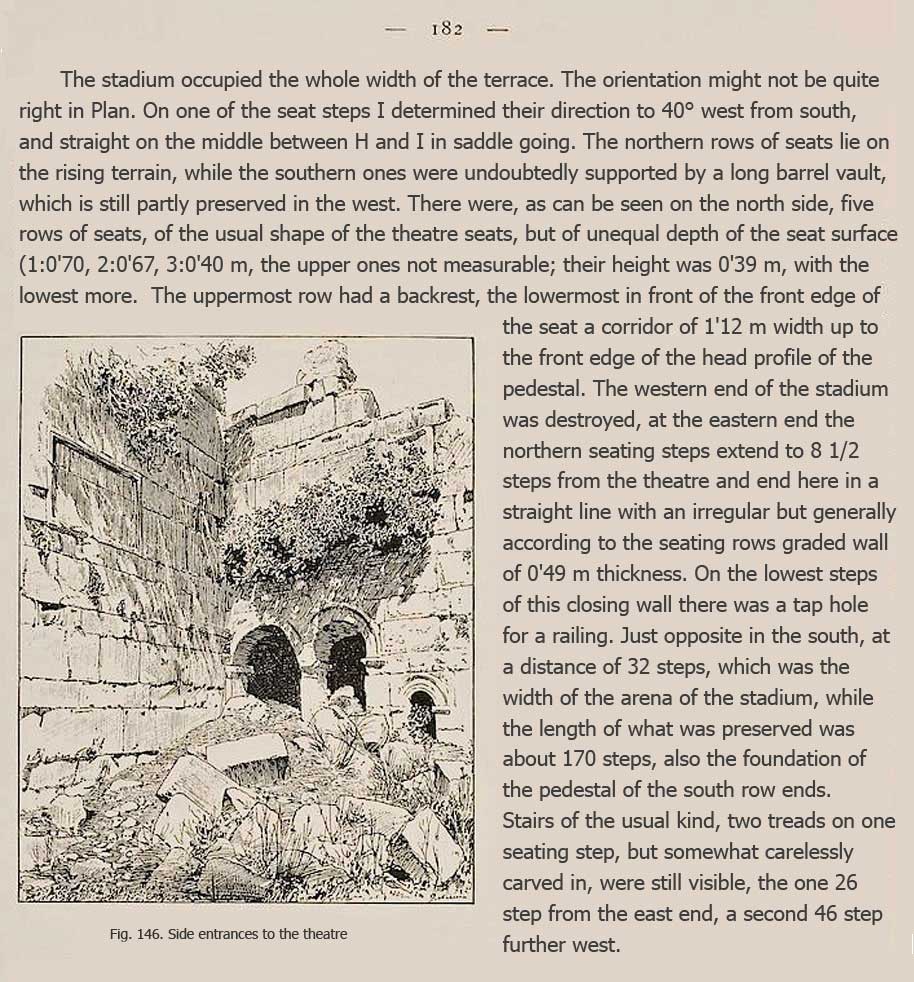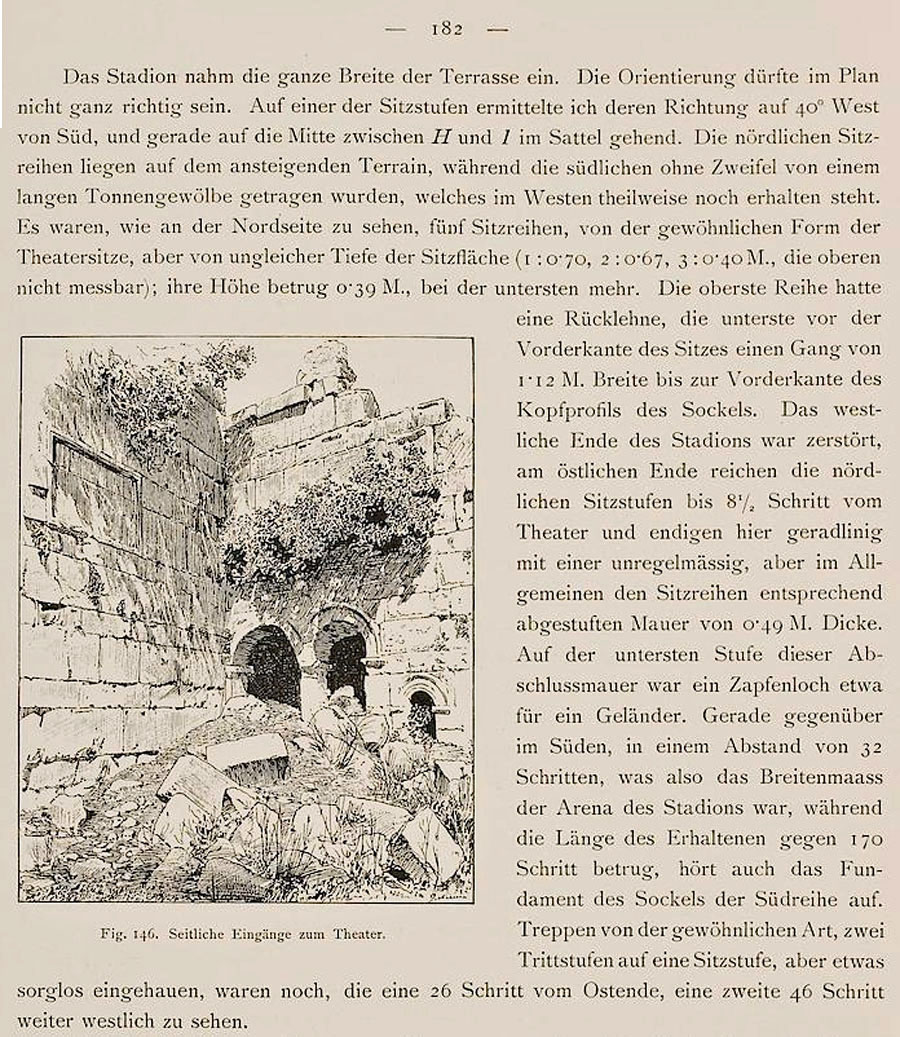 |
|
Ancient stadiums in Turkey Selge |
|
|||||||||||
 |
|
|||||||||||
|
||||||||||||
|
On the former stadium of Selge cows graze today, on a further section a plough pulls its furrows. Of the rows of seats, three and five have survived. |
||||||||||||
| The history of Selge: | ||||||||||||
|
According to tradition, Selge was founded after the war for Troy by the seer Kalchas and settled by Greeks from Sparta. On coins the place is verifiable since the 5th century BC. Economic basis were the cultivation of wine and olives on the surrounding fertile plateau. Politically there were good relations to Aspendos, otherwise the city was warlike against its neighbours. When Alexander the Great travelled through Asia Minor, the city allied itself with him to besiege the nearby town of Termessos, but without success. |
||||||||||||
 |
||||||||||||
| The Austrian-Polish explorer Karl Graf Lanckoroński wrote in 1892 in his book "Städte Pamphyliens und Pisidiens" volume 2, on page 182 the following about the stadium in Selge: | ||||||||||||
 |
||||||||||||
|
The Original |
||||||||||||
 |
||||||||||||
| Photos: @chim | ||||||||||||
| Translation aid: www.DeepL.com/Translator | ||||||||||||
| Source: Wikipedia and others | ||||||||||||
|
|
||||||||||||

